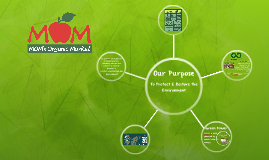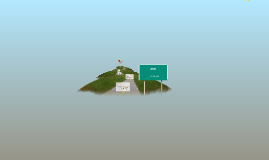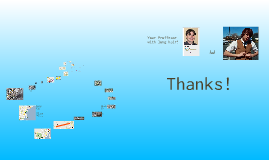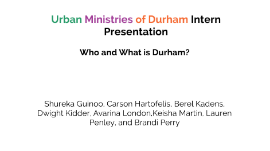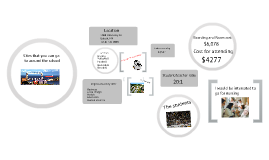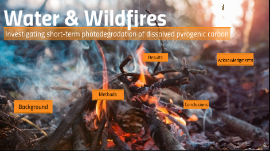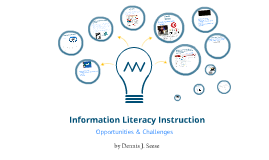UMD Intern Presentation
Transcript: Shureka Guinoo, Carson Hartofelis, Berel Kadens, Dwight Kidder, Avarina London,Keisha Martin, Lauren Penley, and Brandi Perry Urban Ministries of Durham Intern Presentation Topic Who and What is Durham? DURHAM, Black Wall Street, and Urban Renewal Subtopic Subtopic Subtopic Decision Makers & Stakeholders Subtopic Wendy Jacobs, Chair James Hill, Vice Chair Heidi Carter Ellen Reckhow Brenda Howerton City Council Consists of several key members and the Mayor Board of Commissioners - Durham County Urban Ministries of Durham (UMD) Founded in 1983, under new management circa 2015 In 2001, the Durham Community Shelter for HOPE, St. Philip’s Community Cafe, and the United Methodist Mission Society merged to form Urban Ministries of Durham. Families Moving Forward created in 2016 after the successful merger of Genesis Home (GH, 1989) and Durham Interfaith Hospitality Network (DIHN, 1994). Healing with CAARE Founded in '96, CAARE initially stood for “Case management of AIDS and Addiction through Resources and Education” but now ecompasses all aspects of wellness Agencies The community Includes local buisnesses and other infrastructures Healthcare systems & Treatment Centers Healthcare providers are directly and indirectly concerned with solving the homeles crisis in Durham Residential treatment centers address susbtance abuse barriers and assist with housing once treated Other Key Stakeholders Homeless Services Advisory Committee (HSAC) A special committee where key stakeholders in Durham come together to address issues, policies, funding, and anything else related to homelessness Four key groups are represented in the committee (Faith-Based Community, Corporate Sector Business, Non-Profit Organization and Formerly Homeless Individuals. ) Continuum of Care (CoC) In 2012, the County Commissioners and City Council come together and jointly serve as the governing body of the CoC developes policies and standards for Opening Doors to Prevent and End Homelessness in Durham. Coming together... Homelessness Services Subtopic Urban Ministries Durham Durham Rescue Mission Food Bank CENC Fisher Memorial United Church of America First Calvery Baptist Church Food Resources Food Healthcare Healthcare Healthcare for the homeless at Lincoln- Provide healthcare for people who are over 6 months and are homeless/ Located at UMD Lincoln Community Health Lyon park and Walltown Clinics- Sliding Scale, have to prove financial need to receive free services. Subtopic Population: 166,032 Race and Origin: White: 65% Black/African American: 8% Native American: 0% Asian: 15% Two or more races: 3% Hispanic/Latino: 8% Gender: Female Persons: 50% Male Persons: 50% Education: HS graduate or higher, age 25+: 95.8% Bachelor’s degree or higher, 25+: 68.2% Demographics for Cary Subtopic Age: Persons 0-9: 12% Persons 10-19: 15% Persons 20-29: 10% Persons 30-39: 13% Persons 40-49: 16% Persons 50-59: 14% Persons 60-69: 11% Persons 70-79: 6% Persons 80+: 3% Demographics for Cary Subtopic Income: Medium Household Income: $99,209 Per capita income: $46,409 Persons in Poverty: 5.6% Average Household Size: 2.6 Marital Status: Males 15+ Never Married: 29% Married: 65% Widowed: 1% Divorced: 4% Females 15+ Never Married: 21% Married: 64% Widowed: 5% Divorced: 10% Subtopic The Caring Place - Provides homeless services to families, including a furnished apartment, utilities, skill building and children’s support services. GAPS - Funding, available housing is limited, client wait list *no other homeless services were identified in Cary itself. Homeless Services - Cary Subtopic Population: 58,379 Race and Origin White: 74.3% Black/African American: 8.4% Native American: .3% Asian: 12.7% Two or more races: 3% Hispanic: 5.9% Gender Female Persons: 53.4% Male Persons: 46.6% Education HS graduate or higher, age 25+: 95.9% Bachelor’s degree or higher, 25+: 74% Demographics for Chapel Hill Subtopic Age Persons 0-9: 8% Persons 10-19: 19% Persons 20-29: 29% Persons 30-39: 10% Persons 40-49: 11% Persons 50-59: 10% Persons 60-69: 7% Persons 70-79: 4% Persons 80+: 3% Demographic for Chapel Hill Subtopic Marital Status Males 15+ Never Married: 54.4% Married: 41% Widowed: .8% Divorced: 4% Females 15+ Never Married: 54% Married: 34.3% Widowed: 4.8% Divorced: 6.8% Income Medium Household Income: $65,373 Per capita income: $38,854 Persons in Poverty: 20.1% Average Household Size: 2.4 Subtopic Chapel Hill (Orange County) Homeless Services Subtopic Population: 311,640 Race and Origin: White: 42% Black/African American: 35% Native American: 0% Asian: 5% Two or more races: 3% Hispanic/Latino: 14% Gender: Female persons: 52% Male Persons: 48% Education: HS graduate or higher, age 25+: 87.4% Bachelor’s degree or higher, 25+: 46.9% Demographics for Durham Subtopic Age: Persons 0-9: 12% Persons 10-19: 11% Persons 20-29: 17% Persons 30-39: 17% Persons 40-49: 13% Persons 50-59: 12% Persons 60-69: 11% Persons 70-79: 5% Persons 80+: 3% Demographics for Durham Subtopic Marital Status: Males 15+ In






